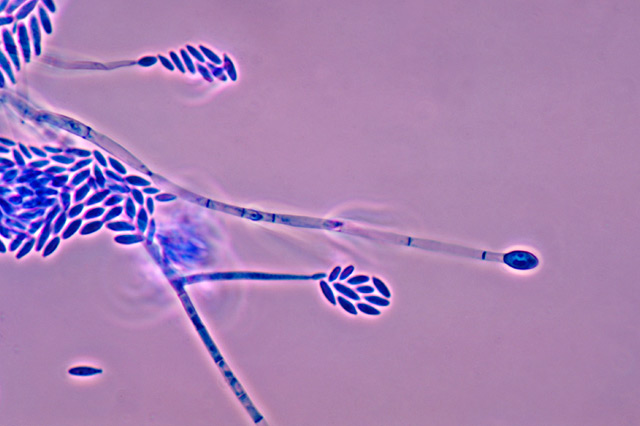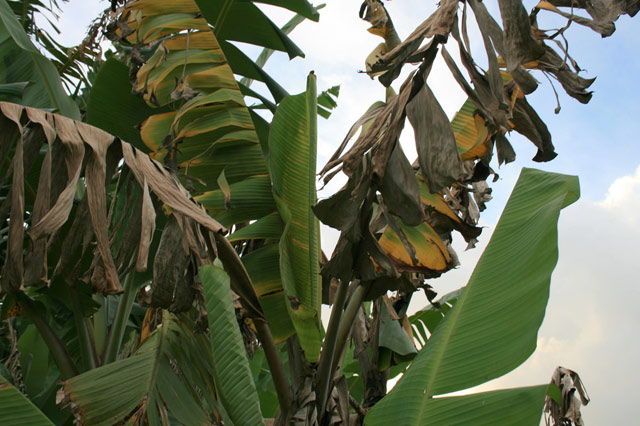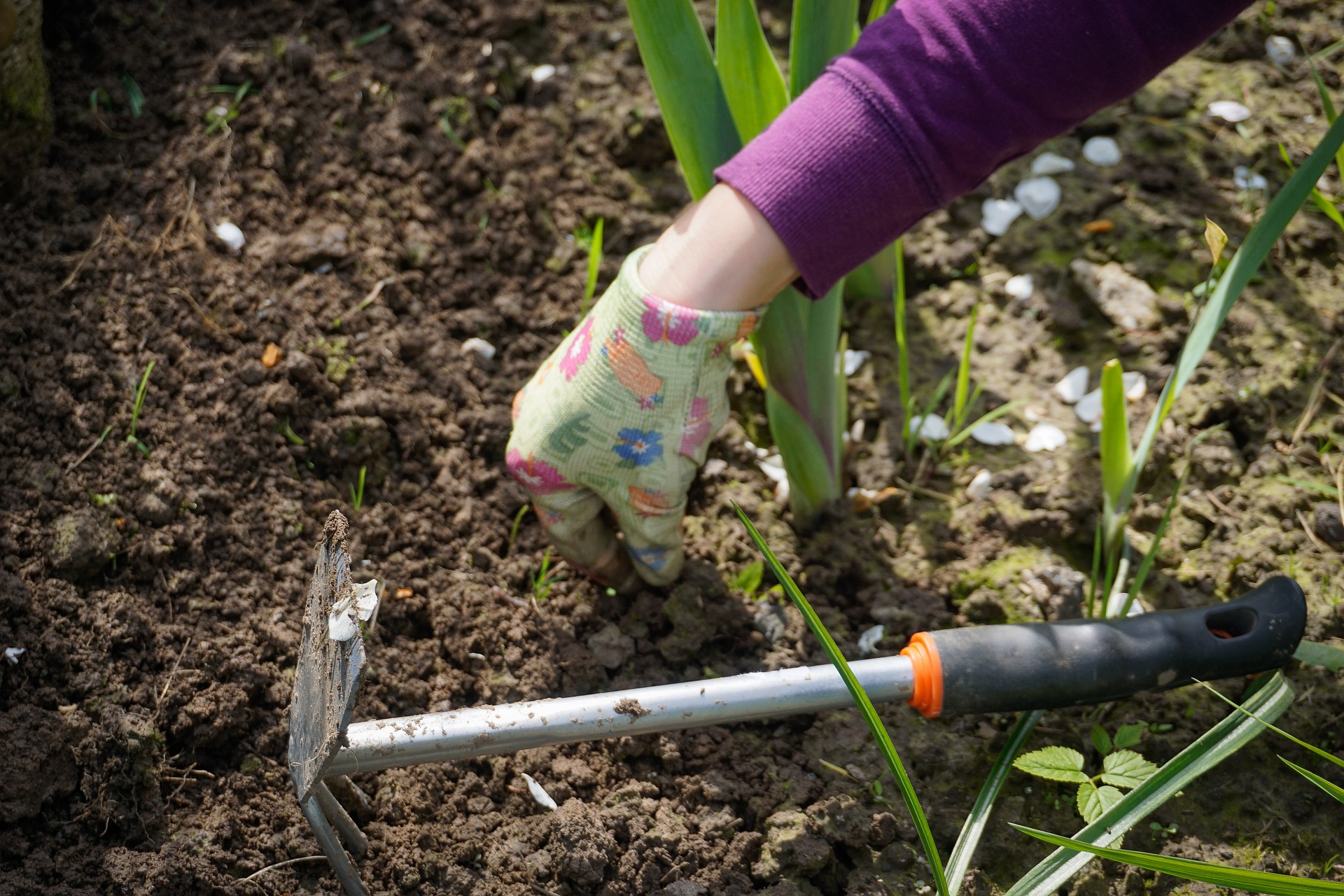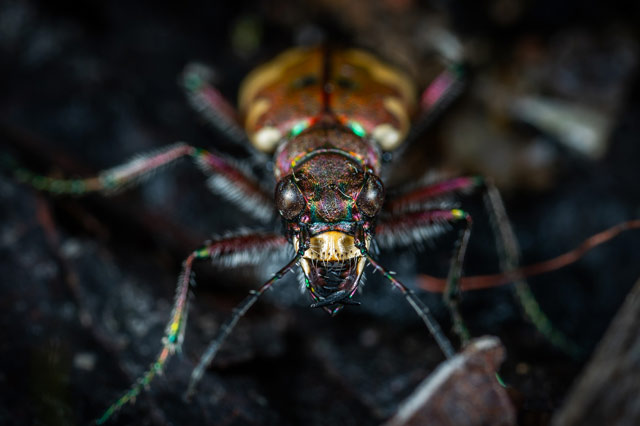The wilting, yellowing and dropping of leaves that lead to plant death in your garden (or landscape) may be the result of Fusarium wilt disease (Fusarium oxysporum or F. oxysporum).
In this gardeninginfo-online.com article, we detail this disease, symptoms, treatment, control measures, and possible future benefits of this global pandemic known as Fusarium Wilt.
What Is Fusarium Wilt Disease?
Fusarium wilt disease is a fungal organism which spreads to plants by entering younger more vulnerable roots. This disease has the ability to survive for years in the soil, and is easily spread by insects, gardening tools, and even by water.
Hot weather, dry soil, and rising soil temperatures all contribute to the growth of this disease. Once inside the root system, Fusarium oxysporum grows into and follows the water conducting vessels of the roots; it eventually grows into the stem and the plants’ extremities.
Watch this video which discusses Fusarium in Georgia’s watermelon crops.
Worldwide, Fusarium oxysporum has become a major problem for many crops, farmers, gardens, and most notably the banana industry (more on this later). Other crops threatened by this invasive and damaging disease are:
- Tomato
- Pepper
- Peas
- Potato
- Basil
- Beans
- Watermelon
- Carnation
- Strawberry
- Palm
Though this is a major pandemic, it is not the only destructive force in your garden. We discuss other diseases that ruin trees, plants, and gardens. Once you know their warning signs, learn the symptoms of Fusarium wilt disease so you do not mis-diagnose a garden disease.
Fusarium Wilt Symptoms
Diagnosis of Fusarium wilt disease contamination is often not possible until late in the growing season. Unlike other diseases which will attack any/all of the foliage at once, Fusarium wilt is first noticed by the yellowing of the older (lower) leaves.
Progression of the disease leads it to the younger leaves, and eventually the death of the plant. Interestingly, it is not uncommon for a single branch or side of the affected plant to show symptoms before passing it to the entire plant.
Can You Save A Wilted Plant?
Yes. To clarify, that’s if the plant is wilting due to dehydration, overwatering, too much wind or sun. If these cases occur, the following may help to revive the plant(s).
- Change the plant’s environment (less sun or better shelter)
- (for potted plants) If the soil is dry, water it until the soil is moist and water runs from the drainage holes. After 30 minutes, water the plant again. Repeat this process until the soil has expanded and feels moist. You can set the container on a water filled tray or sink basin to allow water to be soaked up as well.
- (for plants in the ground) Poke holes in the ground surrounding the plant and water until the soil returns to an expanded moist state. This should be done in 30 minute intervals as well.
- Spray the leaves with water. This will help them rehydrate more quickly.
If your plant(s) do not recover, it is likely that they are already dead or infected by disease.
No. If the plant is infected (the fungi invaded the stem/trunk and roots) by a fungal organism such as Fusarium wilt; it cannot be saved. In fact, once it’s discovered the affected plant and its soil should be immediately removed and destroyed.
To learn more on saving wilted plants, read homeguides.sfgate.com/quickly-rehydrate-wilted-plant-23002.html
How to Eliminate Fusarium Wilt Disease
You don’t. Fusarium wilt is a worldwide problem that can be controlled but not eradicated.
It is important to understand that not all fungi are harmful. In fact, decades of research have shown that the mycelia of certain fungi interact with roots and form mycorrhizal associations between trees, plants, and shrubs. These associations promote the strengthening of the chemical defense system, and the transfer of needed carbon and nutrients from one specimen to another.
Dealing with an invasive fungal organism such as Fusarium wilt requires fast action and diligence. The following steps will help to control the spread of the fungus:
Remove Infected Trees, Shrubs, and Plants – Once contamination is confirmed, remove and dispose of the infected tree, shrub, or plant.
No Composting or Mulching – Do not add any removed portion of an infected specimen to any compost piles or mulching systems, as this will only serve to propagate the spread of the fungus.
Plant Varieties Resistant to Fungi – When planting or replanting in areas that have been affected by Fusarium wilt, look for plant, shrub, or tree species that are resistant to fungal intrusion.
Keep Weeds Under Control – Weeds are notorious for hosting destructive pathogens such as ‘wilt’. Hand pull weeds from moist (loose) soil, removing as much of the roots as possible.
An alternative to pulling weeds is the use of a torch to incinerate all active traces of the disease, or using an organic/natural herbicide to inhibit their growth.
Nitrogen Rich Soil – Wilt susceptibility may be increased with the use of fertilizers high in nitrogen. A simple soil test will help you determine the soil’s nitrogen level.
It is recommended to use a slow-release (low nitrogen level) organic fertilizer to lower young root susceptibility to fungal intruders.
Biological Fungicides – The use of biological fungicides (or biofungicides) is an effective way to control pathogenic fungi like F. oxysporum.
Biofungicides are measured in cfu/g (colony forming unit per gram), and composed of mycelium and spores of non-pathogenic fungal strains. They work by depriving pathogenic fungi of both space and nourishment by:
- Colonizing plant, shrub, and tree roots.
- Acting as a hyperparasite (a hyperparasite’s host is itself a parasite). By doing this, biofungicides disrupt the cell walls of pathogens, while producing metabolites which effectively stop plant pathogens.
Insects and Infestations – Pest control is already an important aspect of garden and landscape maintenance. That importance cannot be overstated when dealing with wilt and other fungal contaminations, as pests weaken and make plants more vulnerable to disease.
Use recommended pesticides for insect control, and in the event of an infestation, the complete removal of the specimen may be required.
Equipment Care – Pruning, cutting, and digging equipment should always be cleaned after use. However, when dealing with infected plant or fungal growth, all equipment should be washed in a solution of bleach and water (with a ratio of 1 part bleach to 4 parts water). Disposable gloves should be used to avoid recontamination of the equipment.
Panama Disease is Fusarium Wilt Disease
Panama disease is the first pathogen to afflict banana crops on a global scale. As with other plant life, the fungus enters the banana trees through the roots.
Once inside, it colonizes the xylem vessels blocking the upward flow of water and nutrients; this leads to the wilting/yellowing of the older leaves, the splitting of the pseudostem base of the tree, and eventual death of the host.
Once Fusarium oxysporum establishes itself in a field, it will persist for an indefinite period of time. Eventual banana production in previously afflicted soil can be accomplished by the planting of pathogen resistant cultivars.
Fusarium Wilt is Everywhere
When infested soil attached to tools, tires, shoes, organic or plant material is transferred from one location to another, Fusarium wilt is given the opportunity to spread and thrive.
Furthermore, spores can be transported by surface run-off waters, thus enabling contaminated irrigation and reserve water reservoirs.
Due to this “ease of transmission and contamination”, the pathogenic strains of Fusarium oxysporum have spread globally. Plants and trees are not the only ones susceptible, grass is too.
Fusarium Wilt as a Mycoherbicide
The destructive properties of Fusarium wilt make it a dangerous disease for all plant life. However, it appears that we may be able to engineer a beneficial use, and in the near future see Fusarium wilt used as a form of biological control against invasive weed species.
As a mycoherbicide, certain strains of F. oxysporum could be a more focused approach than the use of herbicide applications (which have associated chemical issues).
Finally, non-pathogenic strains of Fusarium oxysporum may eventually be released to compete with disease causing fungal strains. By doing so, pathogenic fungi would be robbed of the essential nutrients for their growth and propagation.
As we learn more about this disease, we are hopeful that we can defend our crops, gardens, and use the otherwise disruptive nature of Fusarium wilt in a beneficial way.
Source(s):
https://en.wikipedia.org/wiki/Fusarium_wilt
The post Symptoms, Treatment, and Control of Fusarium Wilt Disease appeared first on http://gardeninginfo-online.com.





No comments:
Post a Comment